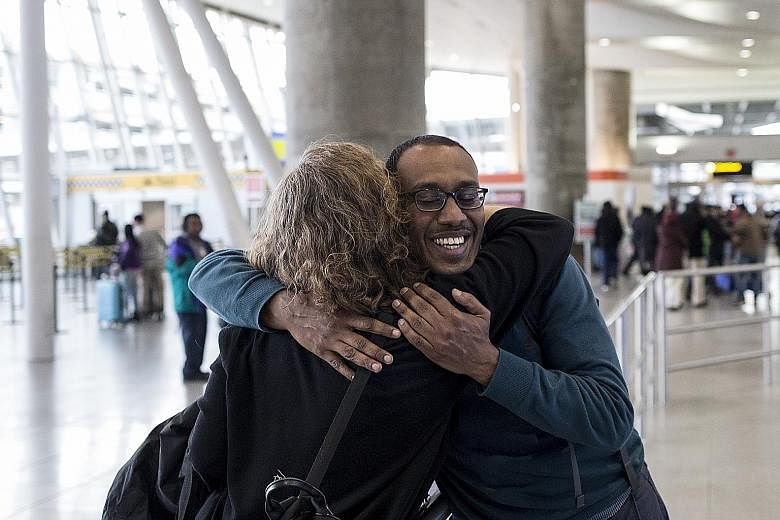NEW YORK • At a sweltering refugee camp on the Kenya-Somalia border, dozens of Somalis who had cleared the final security and medical checks to enter the United States were told to prepare themselves for a flight to a new life.
In Pittsburgh, a medical student from Iran finally got back to school after a chaotic journey that left him sleeping on a chair for four days.
With the door open again for travellers and refugees who had been excluded by US President Donald Trump's order on immigration, the race to reach the US has accelerated among waves of people fearing the opportunity might be fleeting.
The rush prompted another round of criticism from Mr Trump that national security was being endangered by court orders that blocked his tight border policy from taking effect. He has suggested that terrorists who wish to do harm to the US could arrive through normal immigration channels.
Those travellers being admitted to the US from seven predominantly Muslim nations singled out for a temporary ban by Mr Trump had been granted visas after screening. Refugees from those countries and elsewhere rushing to reach the US had likewise already been vetted even more extensively, in a process that involves dozens of checks and can take more than two years.
But it is unclear whether a court order blocking Mr Trump's policy from taking effect, issued by a federal judge in Seattle, will be in place for long, creating a sense of urgency among those trying to reach the US.
The back and forth had sown confusion, anxiety, fear and disbelief, but the court order created "a temporary window that we wish to take advantage of", said Mr Leonard Doyle, a spokesman for the International Organisation for Migration, an intergovernmental agency that facilitates refugee resettlement.
Families and immigration advocacy groups were buoyed twice over the weekend - first when the Seattle judge temporarily blocked the executive order, and again when the US Court of Appeals in San Francisco denied the government's attempt to gain an emergency stay.
But a mood of uncertainty persisted after a week in which thousands of travellers bound for the US were halted in transit and turned away at airports, and courts across the country issued conflicting rulings over whether and how the executive order should be carried out.
On the floor of Terminal 4 at John F. Kennedy Airport, six-year-old Wael Izzeldin wrote a welcome sign for his father's best friend, Dr Kamal Fadlalla, a second-year resident at Interfaith Medical Centre in Brooklyn who had been on vacation visiting his mother in Sudan, his first time home in three years.
When Dr Fadlalla appeared, he was ebullient but fatigued. Though he holds a visa for people in specialty professions, he had been turned away at the airport in Sudan, and spent a week marooned.
"I'm glad justice won," he said.
An interim ruling on whether the executive order may be enforced is likely to come quickly from the appeals court. But the ultimate decision on whether the order is lawful will take much longer, and is likely to come from the SupSreme Court. That means people seeking to travel or settle in the US may be in limbo until the case is finally resolved.
NYTIMES

